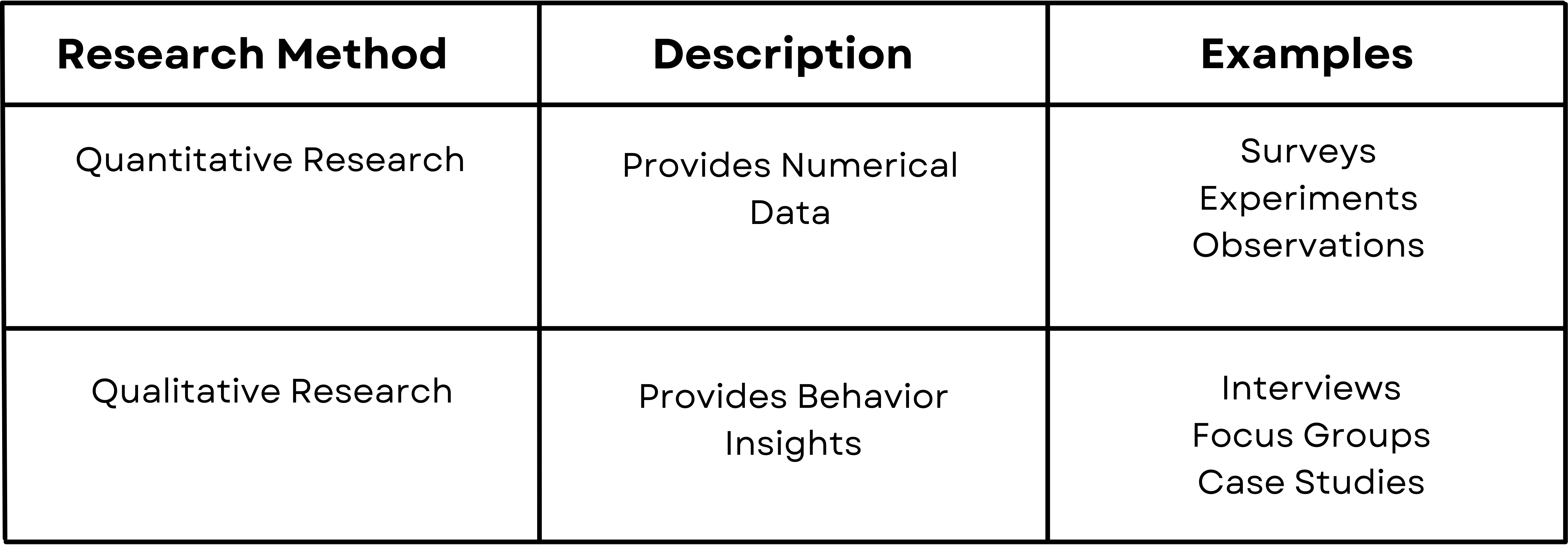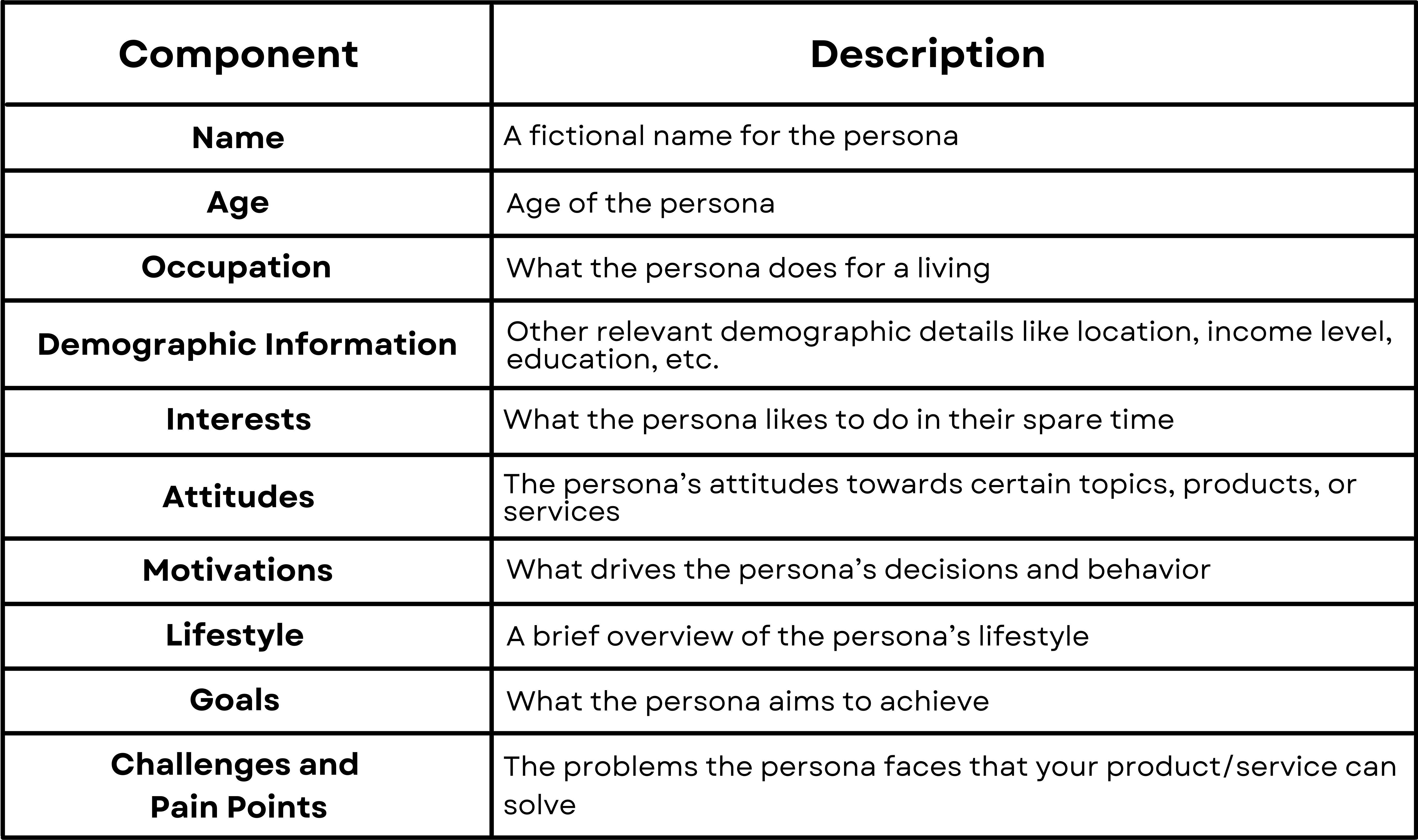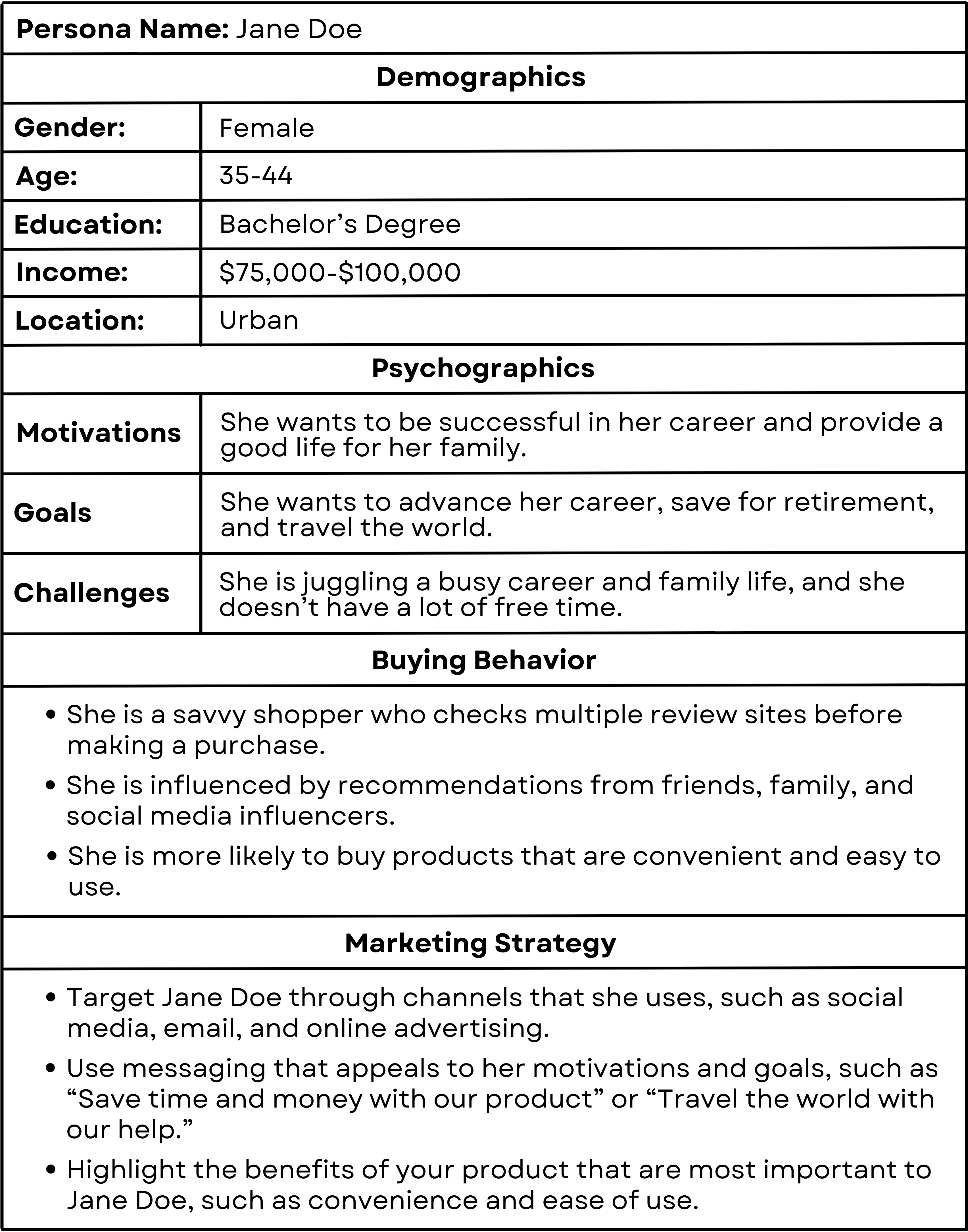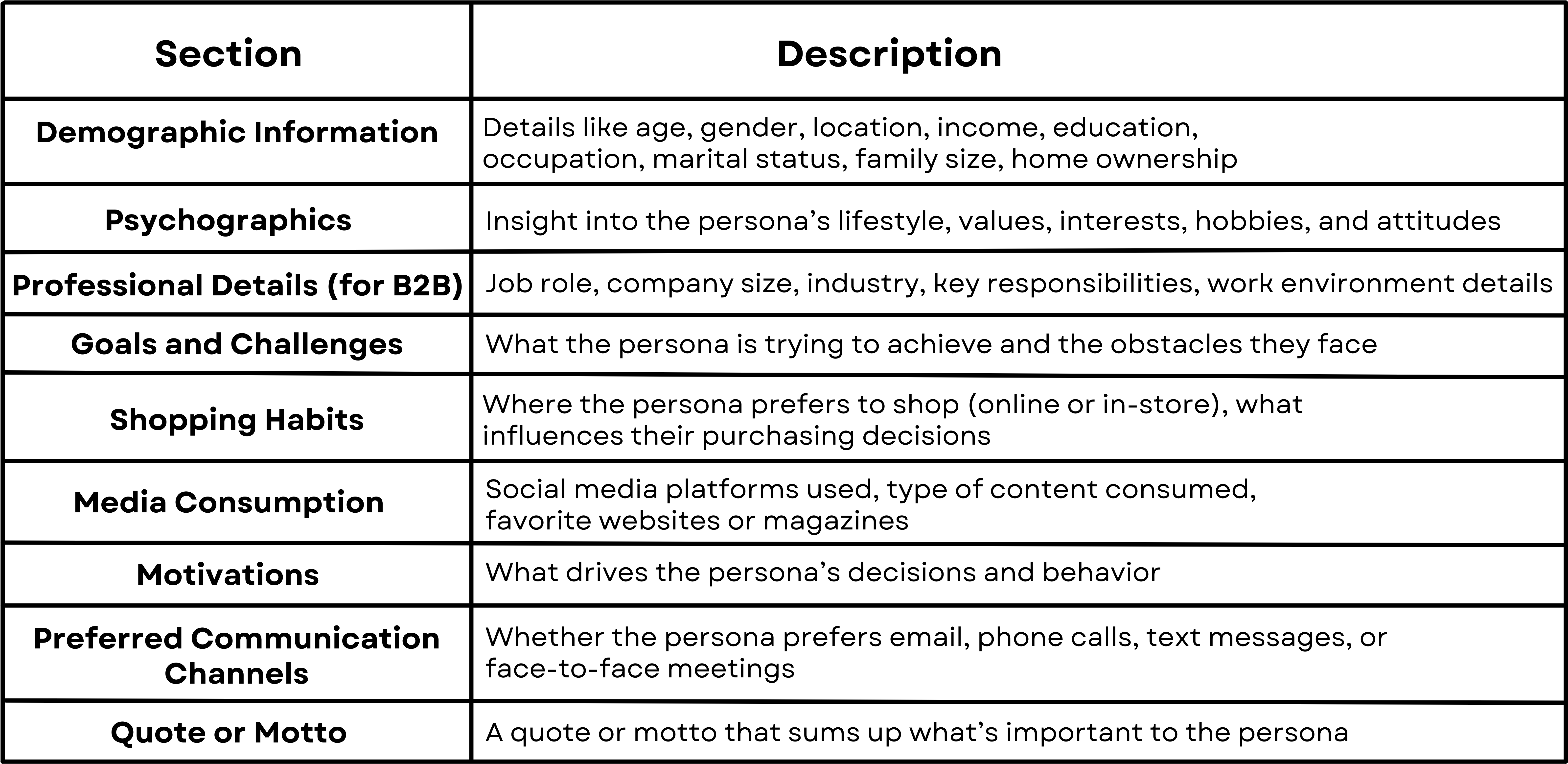Article's Content
According to a 2023 Semrush survey of marketers, 47% of respondents cited audience research as the biggest factor contributing to content marketing success. Audience research is particularly important because it lets brands zero in on key audience segments through marketing personas.
Marketing personas are fictional avatars of your target audience that are based on insights and analysis from real customer data. They breathe life into demographic data, revealing hidden passions, pain points, and potential avenues to unlock conversions.
Unfortunately, many brands struggle to create effective marketing personas to inform their campaigns. To make it easy for you, we’ve divided this ultimate guide into a clear, direct, and engaging four-step process. Here’s what we’ll cover in this post:
So, let’s get started.
First Things First: Why Do Marketing Personas Matter?
By creating marketing personas, you can get to know your customers on a deeper level and create content and marketing campaigns that they’ll actually care about.
Here are five reasons why marketing personas matter:
- They help you understand your customers. When you know your customers’ demographics, psychographics, and buying behaviors, you can create marketing messages that resonate with them.
- They help you create more effective marketing campaigns. When you know who you’re targeting, you can tailor your marketing messages and channels to reach them more effectively.
- They help you save time and money. By focusing your marketing efforts on your ideal customers, you can avoid wasting time and money on marketing campaigns that don’t reach the right people.
- They help you improve your customer service. When you understand your customers’ needs and pain points, you can provide better customer service that meets their expectations.
- They help you build stronger relationships with your customers. When you build relationships with your customers, they’re more likely to become loyal customers who keep coming back for more.
The bottom line: If you’re not using marketing personas, you’re missing out on a valuable tool and likely flushing your marketing budget down the drain.
Four Steps to Create Winning Marketing Personas
Understanding your audience is the cornerstone of effective marketing. Marketing personas allow businesses to tailor their strategies to meet specific customer needs, increasing engagement and conversions.
Let’s delve into the process of creating impactful marketing personas.

Step 1: Conducting Research for Creating Marketing Personas
Creating accurate and effective marketing personas is a crucial part of any successful marketing strategy. Research is the first step in this process, and it holds significant importance as it forms the foundation of the personas—particularly, the quantitative and qualitative research methods.
Quantitative and Qualitative Research Methods
Both quantitative and qualitative research methods are essential for creating comprehensive marketing personas.
On the one hand, quantitative research provides numerical data such as age, income, and location. It’s great for getting hard facts about your audience. Examples include surveys, experiments, and observations. On the other hand, qualitative research helps us understand why people behave the way they do. It provides insights into attitudes, behaviors, and motivations.
This can be gathered through methods like interviews, focus groups, and case studies. Both have their strengths and weaknesses; while quantitative data provides breadth, qualitative provides depth.

Identifying and Understanding Your Target Audience
Knowing who your target audience is and understanding their needs, wants, and pain points is critical for creating accurate personas.
This involves analyzing demographic information (age, gender, location, etc.), psychographic information (interests, attitudes, values), and behavioral data (purchasing habits, brand interactions).
Collecting Data and Analyzing Insights
There are several methods to collect data, including online surveys, interviews, social media analytics tools, and website analytics. The digital era has made it much easier for you to reach out to your ideal customers and collect the necessary data.
Once the data is collected, it’s crucial to analyze it to identify key insights that will shape your personas. Tools like Google Analytics, Facebook Insights, and customer experience software as well as can provide valuable information about your audience.
Create User Personas Using the Research
After collecting and analyzing your data, the next step is to create user personas. These personas are semi-fictional characters that represent your ideal customers based on the research you’ve conducted.
Creating user personas is a crucial step in understanding your target audience better. These personas, based on the research data collected and analyzed, represent your ideal customers.
Here’s a simple table to illustrate the components of a user persona:

Step 2: Creating Marketing Personas—Demographics, Psychographics, and Buying Behavior
Creating a marketing persona requires a deep understanding of your target audience’s demographics, psychographics, and buying behaviors.
Below is a mock marketing persona for a fictitious product, including demographics, psychographics, technographics, and buying behavior:

This is just an example; you’ll need to tailor your marketing persona to your specific product and target audience. However, this should give you a good starting point for creating a marketing persona that will help you create more effective marketing campaigns.
Step 3: Personalizing Marketing Strategies with Marketing Personas
Now that you’ve created your marketing personas, it’s time to bring them to life and allow them to guide your marketing strategy. For this, you’ll need to do the following:
- Segment your audience and target personas
- Personalize content, offers, and campaigns
- Apply personas across marketing channels
Let’s dive into each of these points.
Segmenting and Targeting Your Personas
The key to successful marketing is delivering the right message to the right person at the right time. To achieve this, you must segment your audience based on your established personas and target each group separately.
For example, if you have a persona named “Fitness Fanatic Fiona,” you might target her with early morning emails featuring nutrition tips, workout gear, and motivational quotes. In contrast, “Entrepreneur Eric” could be targeted with late-night LinkedIn ads focused on productivity tools, networking events, and business growth strategies.
Personalizing Content, Offers, and Campaigns
Once you have targeted your personas, you can start personalizing your content, offers, and campaigns. This means tailoring the messaging, design, and tone of your content to each persona.
For example, if you have the persona of a busy parent, you might use short, easy-to-digest content that they can read on their phone. You can also personalize your offers and campaigns. You might offer a discount to someone who has been a customer for a certain amount of time, or you might send them a personalized email about a new product that you think they would be interested in.
Using Marketing Personas in Email Marketing, Social Media Marketing, and SEO
Marketing personas can be used in all aspects of your marketing, including email marketing, social media marketing, and SEO.
- In email marketing, you can use personas to segment your email list and send targeted messages to each group. Just be sure to keep this list up-to-date and use an email verification tool to maintain a a clean and verified email list. You can also use personas to personalize the subject lines and content of your emails.
- In social media marketing, you can use personas to identify the social media platforms that each persona uses and then create content that is tailored to those platforms. You can also use personas to target your social media ads.
- In SEO, you can use personas to identify the keywords that each persona is likely to search for. You can then use these keywords in your website content and blog posts.
Remember, the goal here is to speak directly to your personas’ needs, desires, and pain points. By doing so, you’ll create more engaging, relevant marketing that resonates with your audience and results in higher conversion rates.
Step 4: Evaluating and Updating Your Marketing Personas
Once you have created your marketing personas, it is important to review and update them regularly. This is because your target audience may change over time, and your personas should reflect these changes.
Importance of Regularly Reviewing and Updating Personas
There are a few reasons why it is important to review and update your marketing personas regularly. First, your target audience may change over time. For example, their demographics, psychographics, or buying behavior may change. Second, your business may change, such as if you launch new products or services. Third, your marketing strategies may change, such as if you start using new channels (such as field marketing channels) or targeting new audiences.
Metrics for Evaluating the Effectiveness of Marketing Personas
There are a few metrics that you can use to evaluate the effectiveness of your marketing personas. These include:
- Increased brand awareness: Are you seeing an increase in brand awareness among your target audience?
- Website traffic: Are you seeing increased website traffic from your target audience?
- Leads and sales: Are you seeing more leads and sales from your target audience?
- Customer satisfaction: Are your customers more satisfied with your products or services?
- Return on investment (ROI): Are you seeing a positive ROI from your marketing campaigns?
If you are not seeing the desired results from your marketing campaigns, it may be time to review and update your marketing personas.
Template for Creating Marketing Personas
Marketing persona templates help speed up the process of creating your first version, giving you more time to test and optimize them as you learn more about your customers. Here’s a template that you can use to create a marketing persona:

Recommended Tools for Research and Data Analysis
The world of research and data analysis is vast, with a plethora of tools available to assist you. These tools are designed to help you collect, organize, analyze, interpret, and visualize data, enabling you to glean valuable insights and make informed decisions.
Here are some recommended tools for research and data analysis:
Google Analytics
This free tool from Google is a must-have for anyone seeking to understand the behavior of website visitors. It provides detailed statistics about a website’s traffic, traffic sources, conversions, user demographics, and more. Google Analytics is easy to set up and integrates with other Google products, including Google Ads and Google Data Studio.

SurveyMonkey
SurveyMonkey is a powerful tool for primary research. It allows you to create and distribute surveys and then analyze the responses. With its intuitive interface and robust analytics capabilities, you can easily gather insights from your target audience.
Tableau
Tableau is an advanced data visualization tool that helps you turn raw data into understandable, interactive visuals. It’s particularly useful for handling large datasets and creating dynamic, real-time dashboards. With Tableau, you can drill down into your data and explore it from various angles.
SPSS
IBM’s SPSS software is a popular tool for statistical analysis in social science research. It’s used for complex data manipulation and analysis, including hypothesis testing, regression analysis, and predictive analytics. While SPSS has a steep learning curve, it’s incredibly powerful once mastered.
Qualtrics
Qualtrics is a comprehensive research and experience management platform. It offers tools for survey design, distribution, and analysis, as well as modules for customer experience, employee experience, and market research. Qualtrics’s embedded analytics capabilities allow you to uncover patterns and trends in your data.
NVivo
NVivo is a qualitative data analysis (QDA) software that helps researchers organize, analyze, and find insights from customer data. The tool can handle structured and unstructured data, including what you gather from interviews, open-ended surveys, social posts, and web content.
Audiense
Audiense is a consumer intelligence tool that includes features for social listening across platforms like Facebook, Instagram, and Twitter/X. Audiense Insights then analyzes the data and provides demand intelligence about specific segments of your audience.

Power BI
Power BI is one of Microsoft’s key business analytics tools. BI vastly simplifies the audience intelligence process, giving you a central dashboard for creating reports and interactive visualizations of data. From there, you can easily extract insights and apply them to your marketing personas.
How to Choose a Tool to Collect Marketing Persona Data?
When choosing a tool, it is important to consider the following factors:
- The type of data you need to analyze
- The level of analysis you need to perform
- The features that are important to you
- Your budget
It is also important to consider the learning curve associated with each tool. Some tools are more complex than others and may require more time to learn.
Once you have chosen a tool, it is important to learn how to use it effectively. Many resources are available to help you learn how to use these tools, such as online tutorials and documentation.
With the right tools, you can easily research and analyze data to gain insights that can help you make better decisions.
Learn How the Top SaaS Brands Use Marketing Personas
Now that you know more about creating marketing personas, you’re ready to take the next step in your B2B SaaS education: learning how to apply marketing personas in specific industry niches.
The Foundation Lab is full of case studies on leading tech companies and exclusive research and analysis of the latest trends.







